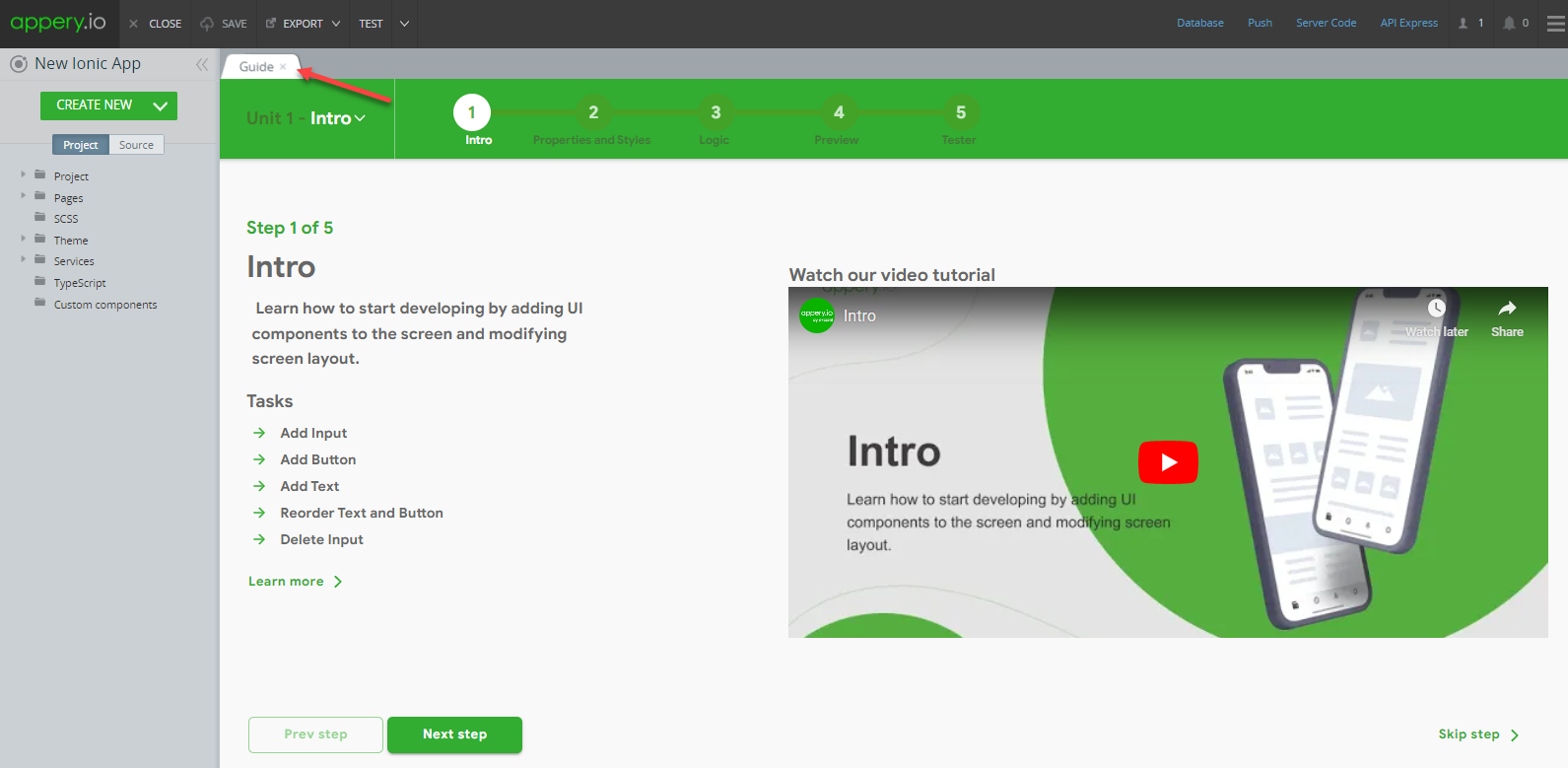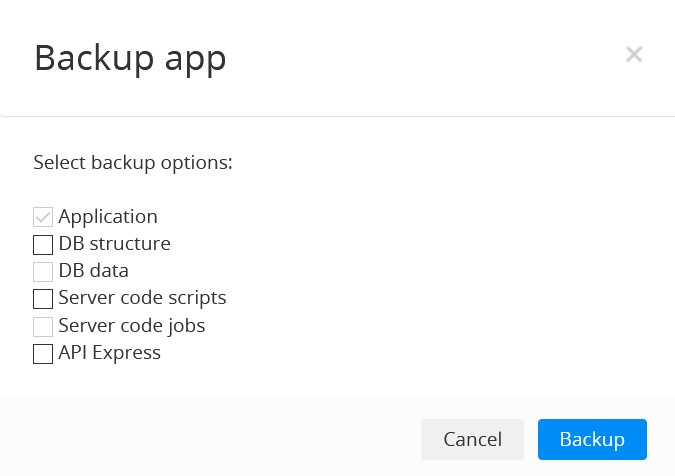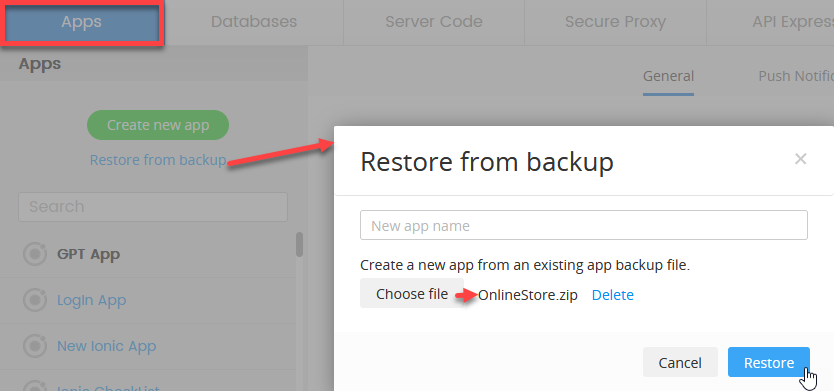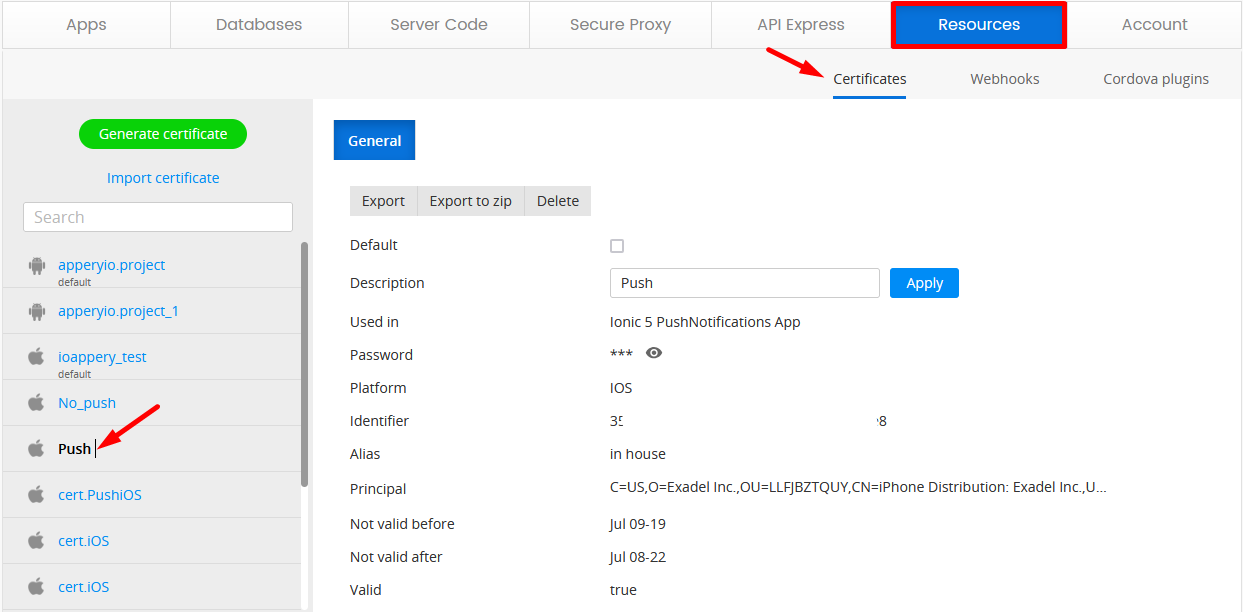Platform Overview
Concise overview of the Appery.io platform dashboard, main tabs, and core functionality for building mobile and web apps
Introduction
Appery.io is a low-code platform for building hybrid mobile apps, web apps, and PWAs. Create apps by choosing templates, using drag-and-drop UI design, connecting databases and services, previewing, and deploying.
Getting Started Video GuideCheck out our detailed video guide covering the main Appery.io platform features:
Platform Dashboard
The Appery.io dashboard contains several main tabs: Apps, Databases, Server Code, Secure Proxy, API Express, Resources, and Account.

Apps Tab
The Apps tab manages your projects. Here you can:
- Create, open, test, rename, update, and delete projects
- Make app backups and create project versions
- Share projects and manage permissions
- Publish apps to custom or Appery.io domains

Project Management
Select any project to access its General, Push Notifications, and Customer Console tabs.
Key Features:
Project Summary: Open, test, rename, delete, backup, update, or debug projects.
Versions: Create app versions to safely experiment with your project. Click New Version to save current state with optional comments.
Creating versions before major changes allows you to restore previous states if needed.
Hosting: Publish apps to Appery.io domains or custom domains. Click Publish to deploy, Unpublish to stop hosting.
App Backups
Create backups to save all pages, UI, services, plugins, and configurations. Maximum backup size: 60MB.
Bundle Project Backup
Export apps with integrated backend services (Databases, Server Code, API Express, Proxies) to create complete copies with all dependencies intact.

Restoring from Backups
Under the Apps tab, click Create new app, select your backup file, name the project, and confirm.

Backend Services
These tabs provide backend tools for your Appery.io projects:

- Databases: Store app data
- Server Code: Write server-side JavaScript logic
- Secure Proxy: Secure sensitive data like API keys
- API Express: Expose enterprise data sources via REST APIs
Resources Tab
The Resources tab manages certificates, webhooks, and Cordova plugins. Access export, update, and delete options for each resource type.

Account Tab
The Account tab provides access to account management, including plan changes, team creation, support packs, and account settings.

For detailed account management information, see the Account documentation.
Updated 2 months ago
